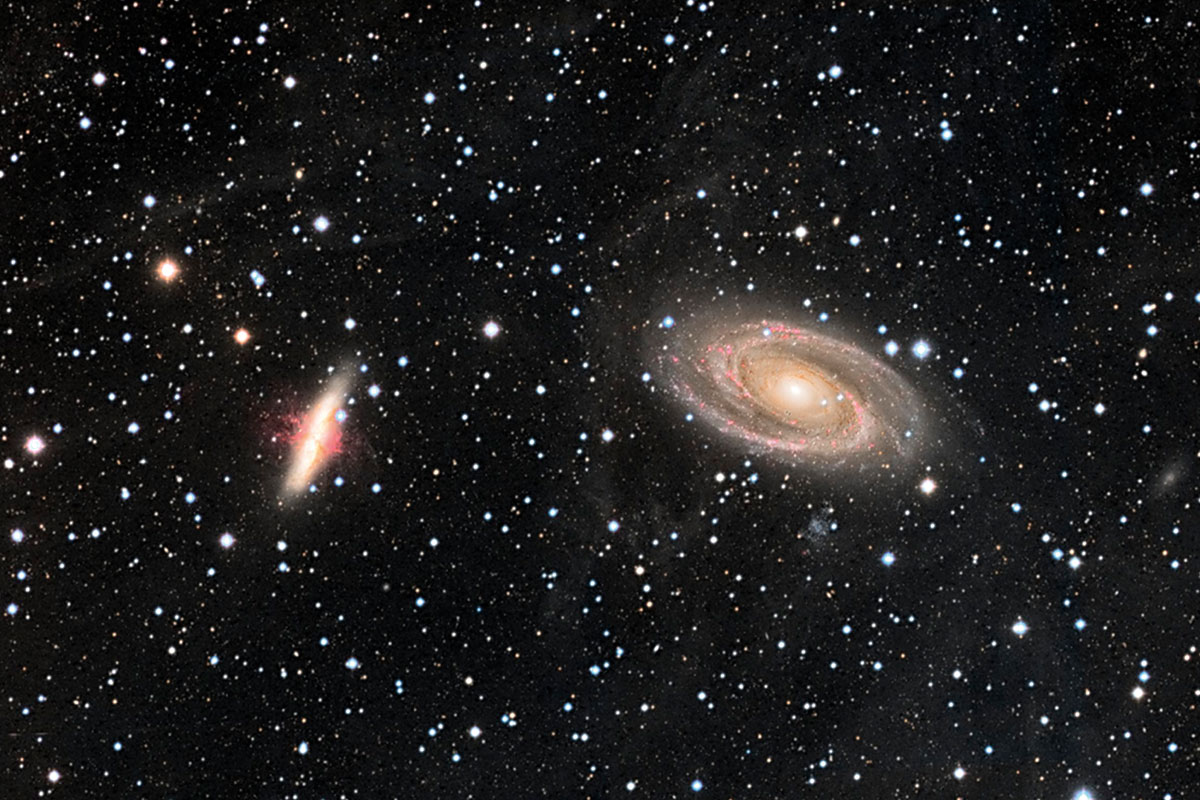
The most essential element of equipment in astrophotography is the digital camera sensor. Not only is digital photography much more sensitive than chemical photography, but it also allows essential processing to bring out faint objects in a dark sky. Two of the main advantages are the ability to stack hundreds of images taken with short exposure times, and tools to «subtract» noise from electronics and other sources.
In many cases, digital astronomical cameras use the same sensors as conventional digital cameras (especially in amateur kits), but there are important differences in the resulting equipment. First of all, astronomical cameras have no optics, shutter release, control buttons, or viewfinder. All of these functions are controlled by the telescope and/or the computer controlling the camera.
In astrophotography, cameras also have the following characteristics: 1) they use sensors selected from among those with the least number of defects, given that a defective pixel in astrophotography could look like a star; 2) the photon content on the sensor is read with a 16-bit analogue-digital converter, which produces a grey-scale palette of 65,536 values (commercial digital cameras are usually 12-bit, or 4,096 values), which facilitates the processing of dark areas (most of them, in astronomy); and 3) the sensor is enclosed in an insulated and sealed chamber which is cooled down to reduce thermal noise.
Another difference is that no filters (accessories designed to modify the spectral distribution of the transmitted radiation) are present in front of the sensor of astronomical cameras to suppress infrared and ultraviolet wavelengths. Capturing images with an extended light spectrum (including infrared and ultraviolet) causes a type of optical distortion known as chromatic aberration (blurred images with coloured edges). To overcome this problem, conventional cameras incorporate a filter to remove these wavelengths. However, scientific astrophotography often focuses on the bands that are invisible to the human eye, for example to locate newly formed stars or to study the oldest and faintest objects (in the visible spectrum) in the observable universe.
Similarly, photographic sensors are normally monochrome, but in conventional photography a matrix of red, green, and blue (RGB) microfilters is added to facilitate colour photography. Astrophotography sensors, on the other hand, use «naked» monochrome sensors to capture as much light as possible. This makes it possible to use a wide variety of filters, each optimised for a very specific functionality. Those most commonly used can be classified according to the band of the electromagnetic spectrum through which they pass. The broadband filters, which cover a wide range of wavelengths, are called L (luminance), R (red), G (green), and B (blue). By combining four monochrome photographs taken with these four filters and correcting the overall intensity (luminance), a more or less realistic colour photograph is obtained (Figures 2–6). Among the narrow-band filters, the so-called Hα (hydrogen α), OIII (ionised oxygen III), and SII (ionised sulphur II) filters are particularly noteworthy and correspond to three of the most abundant emission bands of the ionised elements comprising most emission nebulae. Photographs taken with the narrow-band filters contain information that can be used to study the chemical composition of an emission nebula.
Representing this chemical composition in a realistic colour code poses problems: the Hα (near-infrared) information should go into the red channel, the OIII information can be split equally between the green and blue channels, but the SII information is too close to the Hα information. Thus, a different colour palette is often used to better highlight the different elements of the nebula. Realism is lost in exchange for better visibility. One widely used palette is the Hubble palette, so called because it was first used with the Hubble Space Telescope. Figure 6 shows the difference between a broadband image of the Rosette Nebula (NGC 2237) and the same nebula when we combine the broadband and narrowband information using the Hubble palette.
Overall, the increasing sophistication of photographic technology is placing a powerful tool for exploring the universe into the hands of amateurs and professionals alike. This technological revolution has already led to a plethora of important discoveries in astronomy, and it is reasonable to expect that in the years to come our understanding of the universe will continue to keep pace with technological advances in astrophotography.





